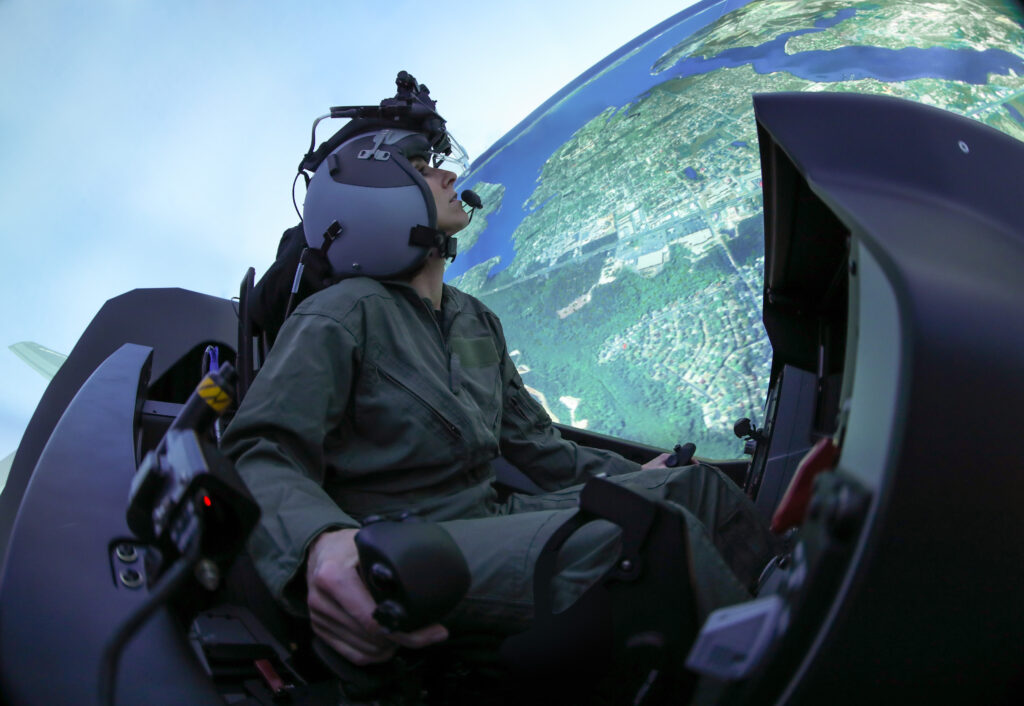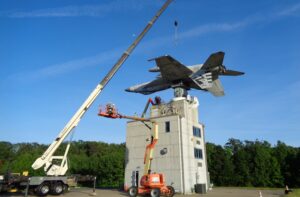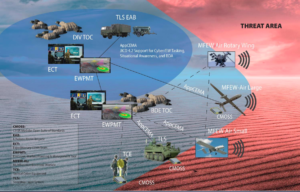By SYDNEY J. FREEDBERG JR.

WASHINGTON: How do you shrink electronics and bureaucracy at the same time? That’s the challenge facing Jim Faist as he coordinates cutting-edge research across the services.
“You need to collaborate,” of course, says the Pentagon’s director for advanced capabilities. But you don’t need to collaborate the way the military did on the F-35 stealth fighter, with a single program developing three variants of one aircraft for three different services.
“Building a joint program office,” he says, “you build a big bureaucracy of requirements validation that no one’s happy with. Typically, there’s no need for that.”
Applying The Hypersonics Model To Electronic Warfare
“What I believe in is not (emphasis added) a joint program office, but joint engineering against specific problems,” Faist said. “Probably the most successful on my watch has been hypersonics.”
While the Army’s building a hypersonic missile to launch from trucks and the Navy’s version will fire from submarines, both services are using the same glide body (which contains the warhead) and the same rocket booster. They are just packaged differently. Meanwhile the Air Force is pursuing more compact hypersonics to launch from planes, building on the same underlying technologies. Helping advance those underlying technologies, develop prototypes, and coordinate the services’ independent efforts is the undersecretariat of defense for research & engineering, where Faist works – playing a supporting and facilitating role, not a directive one.
“We’re taking that model and we’re doing that in electronic warfare… the exact same thing,” Faist told me.
What’s more, he argued, “as soon as you build a big program office, only a big company can win that.” But for many technologies, like microelectronics and drones, he said, “there’s lots of suppliers you can leverage to get more affordable solutions.”
What does this mean for Pentagon programs? “If the Army goes and builds a slightly different version [than] the Air Force, just because they pick a different vendor [or] they have slightly different requirements, it really doesn’t matter,” Faist told me. “If you’ve saved the money in the RDTE phase” by developing the tech together, he said, “they don’t have to be identical” when it comes to each service’s final products.
The goal, he told me, is to get the different services’ engineers working together on common problems, with top-down oversight targeted to ensure the final products are compatible, instead of imposing joint requirements and joint programs at the start.
Indeed, a single Joint Program Office would probably work even worse for electronic warfare than for hypersonics or fighters. That’s because, unlike missiles or aircraft, EW isn’t a single type of platform: It’s a capability increasingly required across all kinds of platforms, from jets jamming surface-to-air missiles to Humvees jamming radio-controlled roadside bombs.

Testing Northrop Grumman’s Next Generation Jammer (NGJ) Low-Band pod on a mock-up of an EA-18G Growler
What’s more, modern electronic warfare, which is about disrupting enemy signals, increasingly blurs together with signals intelligence, which is eavesdropping on the enemy, and even with communications between friendly forces.
As microelectronics grow ever more versatile, a single Active Electronically Scanned Array (like the AESA on the F-35) can send, receive, or disrupt both radar pulses and radio messages, allowing it to act simultaneously as a sensor, communications device, jammer and cyber weapon. As microelectronics shrink ever smaller, you can put those multi-function arrays on more and more smaller platforms – on every plane, drone, robot, ground vehicle, or even individual soldier – and then network those mini-arrays to work together with a power far exceeding what a single large system could do.
“We can build wide-band AESA technologies [that] can do SIGINT, sensing, right down the list,” Faist told me. “In technologies we field now, the hardware, the physical layer, can do all these multi-missions.”
Taking advantage of that flexibility is challenging for how military procurement is organized today, he acknowledged. “A service is completely used to buying a comms system or a radar system. If you tell them you have a system that does both… how do you get the combined requirement?” he asked. “To get that design done right and get it implemented is probably the hardest challenge we have.”
But the effort is worth it, Faist argued. Having lots of small, multi-purpose systems gives you some fundamental advantages over having a handful of big, specialized systems.

A UH-60 Black Hawk launches an ALTIUS mini-drone at Yuma Proving Ground.
From Few, Large & Far Apart To Many, Small, & Close Together
Faist began his career designing radars, he told me. In the radar field, there’s long been an appreciation for the value of so-called multi-static systems. Instead of one big transmitter-receiver antenna, you have lots of little transmitters, all networked to align their beams, and lots of little receivers, all networked to combine their data into one big picture, something like the way a radio telescope works.
If you combine radio telescopes that are 5,000 miles apart, their combined resolution is as good as a single telescope 5,000 miles across. But this kind of distributed system requires ultra-precise timing and reliable connections that historically weren’t available on the battlefield. Now, increasingly, they are.
E-8C JSTARS
The new technology doesn’t just let you do things the old way, only better. It actually opens up entirely new tactics. Imagine how differently you’d play chess if, instead of having lots of pawns that can only inch up the board and a single queen that can move in all directions, you could move all your pawns wherever you wanted in lots of different directions.
Today, the US military relies on so-called low-density high-demand systems such as the EC-130H Compass Call to jam enemy communications, the E-8C JSTARS to track ground targets by radar and the E-3 AWACS to track aircraft. Those platforms pump out a lot of electromagnetic energy, making them relatively easy for an enemy to detect, counter and destroy. And if one is destroyed, it takes a big chunk of that specialized capability with it.
“The larger platforms are expensive,” Faist said. “They’re big targets.”
If you network together large numbers of small systems instead, you can get comparable total capability and it’s harder for the enemy to detect any particular node, and much less damaging if one node is destroyed. This is the logic behind the Air Force’s JSTARS replacement program mutating into the Advanced Battle Management System (ABMS), an attempt to network together a wide variety of sensors and weapons across the services – part of a concept called Joint All Domain Command & Control.
Yes, you’re in trouble if your network goes down, and a smart adversary will try hard to take it down. But the old school large platforms also depend on communications staying unjammed – an AWACS that can’t share information with friendly fighters is largely useless – and they’re easier to jam. That’s because weak signals are easier to jam than strong ones, and radio signals lose power exponentially with increasing distance: Double the range, and your transmission power is down to one-fourth; quadruple the range, you’re down to one-sixteenth. So it’s much easier to relay a signal in short hops from node to node to node than to transmit directly over long distances, which means lots of small things close together are harder to jam than a few big things far apart.

Each of the Army’s future jammers plugs into a larger electronic warfare network.
“Generally, you have a better chance of burn through and actually operating through jamming when you’re in [close] proximity with each other,” Faist told me. “It’s when you get to the longer trunk lines, like you’re going back to a command node, that you’re more vulnerable.”
So how do you minimize the amount you have to transmit long distances? You need each individual node – drone, manned vehicle, or soldiers – to be able to operate as autonomously as possible. Instead of relying on constant high-bandwidth, low-latency transmissions to a remote-control operator, analyst, or commander, you pack each node with its own on-board artificial intelligence.
“There’s this assumption that we can field a UAS system, it has full rate video, that video bandwidth gets uplinked through satcom [satellite communications], it gets downlinked to somebody that operates it and use the data,” Faist told me. “The paradigm has to change.”
“You’re really pushing to the edge autonomous AI-based solutions,” he said. “When you get to that tactical level … it’s going to be as much AI-based as you can afford.”
No comments:
Post a Comment